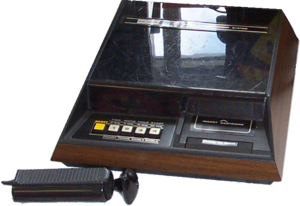I’ve been playing around with the concept of using the 2C02 PPU hum intentionally.
B00daW: So far I’ve created a flickering BG0 test ROM that yields no noise. I’ve also used NO CARRIER’s GlitchNES; then modified it so that the APU and all channels are turned on. All I get is a small pop when the APU turns on and a click when the NES is shut off.
Does anyone have any idea about which part of the PPU would be producing the hum and what would be done to purposefully make the hum? (Speaking strictly via software that is.)
Furthermore, what frequencies are achieved and are they consistent?
I’ll be messing about with this a bit furtherblargg: Haha, great idea. Hours later, here’s a demo that plays the first few notes of the SMB theme through the PPU. Run on a NES and plug your audio RCA cable into the VIDEO output to hear (turn down volume first, as the buzz is kind of loud).
ppu_tune.zip with NES ROM and ca65 source
I got side-tracked trying to play 6-bit PCM out of the PPU (couldn’t get the output levels to match what they should have). I did get 3-bit PCM working, but lack the RAM on my devcart to put any decent-length sample on it. Had to settle for a simple square wave. It just plays it by loading the palette with black and white, and toggling between the two entries by changing the PPU address (with rendering disabled). Connect NES normally to “see” the waveforms on screen.
Tag: b00DaW
-
Some times the Coolest stuff is at the edges..
-
Now hosted on TCTD: Microhorror2 Comp
TRACKLIST:
INTRO 2.14
Albino Ghost Monkey 3.24
B00daW 3.44
Dj Hollow Life 4.11
Epichunt 5.29
ESC 2.43
Flashbob 4.07
Joedouken 2.20
Mattisson 3.52
Peter Swimm6.07
Poke 1,1702.31
quBit1.39
Sidabitball2.21
Silreq3.39
Sparkyboy3.57
Starmelt4.02
the_mm_project3.47
TristEndo2.57
Zombectro & JDDJ3J3.36


